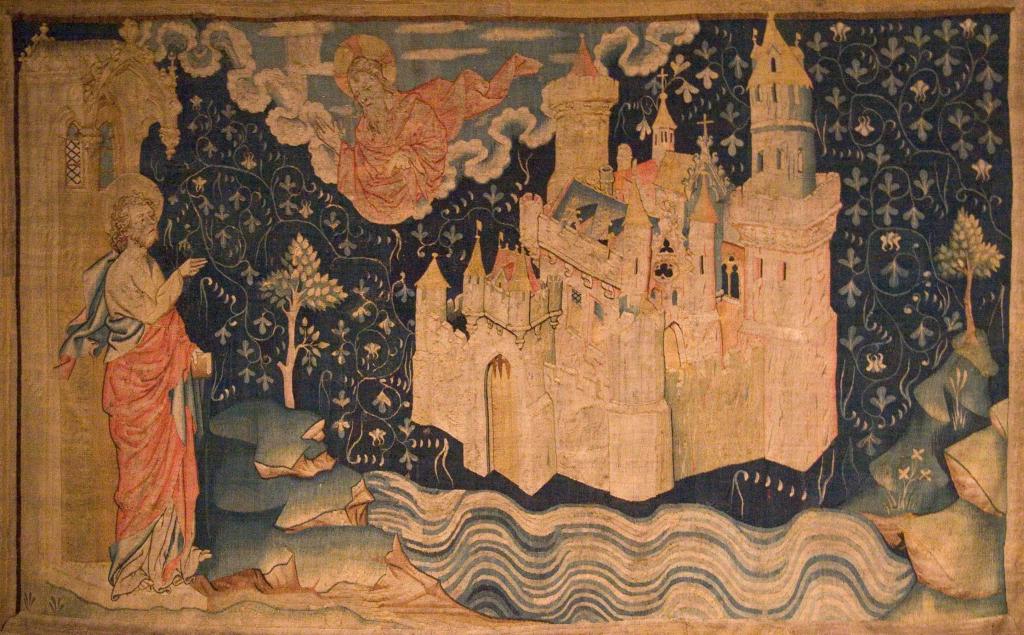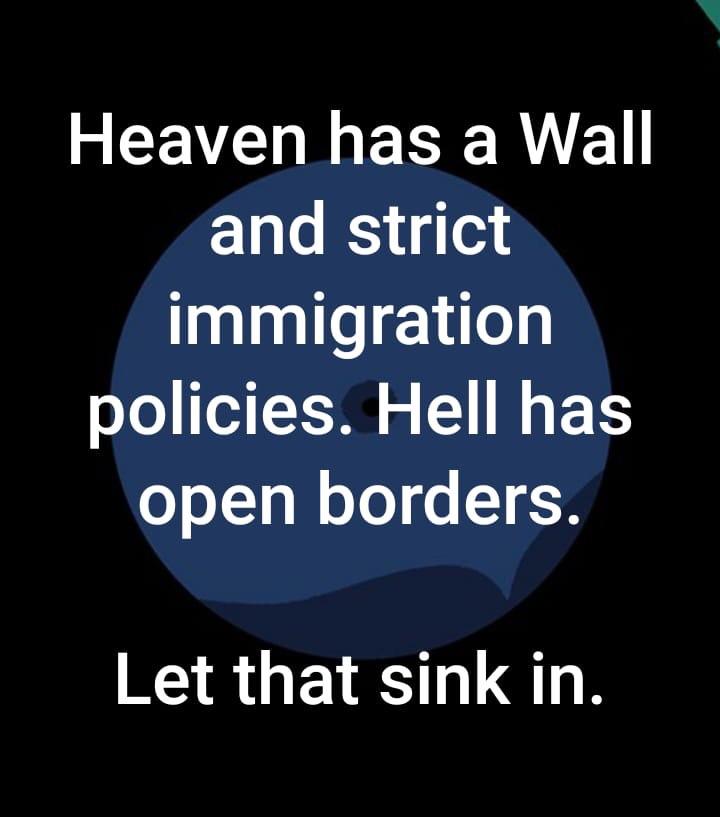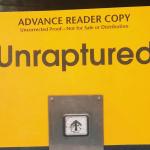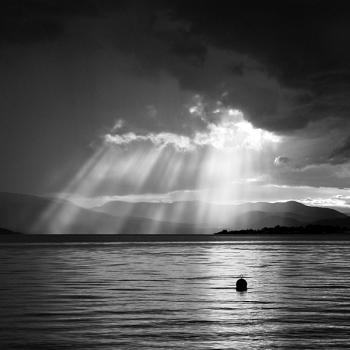
The United States government has been partially shut down now for just over 16 days.
All because of a wall.
Well, nobody except Donald Trump and his small, but blindly devoted band of followers.
One of those blindly devoted followers is a Dallas-based pastor named Robert Jeffress. You might have heard of him. He’s the same Robert Jeffress who claimed that Donald Trump has been anointed by God to wipe Kim Jong Un off the face of the planet with fire and fury. The same Robert Jeffress’ whose church wrote an idolatrous hymn in praise of Donald Trump. The same Robert Jeffress who….well, you get the point.
Over the weekend, Jeffress was back at it offering his sanctification for Donald Trump’s objectively anti-Christ policies.
This time Jeffress was trying to defend Trump against critics who say his wall is immoral (Because it is. Because it serves no real purpose. It’s nothing more than a monument to bigotry and racism.) His defense rested on what has become a popular meme in conservative Christian circles. You know the one. You’ve seen it all over Facebook. It’s some version of this….

Not to be outdone by a meme, Jeffress decided to dial things up to 11 and claim that if a border wall is immoral, then God is immoral because God built a wall around heaven.
The Bible says even Heaven itself is gonna have a wall around it. Not everybody is going to be allowed in. So if walls are immoral, then God is immoral. There’s nothing immoral about a wall, but what isimmoral is for Democrats, for political reasons, to block this president from fulfilling his God-given responsibility to keep our country safe.
Checkmate liberals.
Except here’s the thing: there is no border wall in heaven.
And Jeffress would know that if he took off his proof-texting Trump goggles and had even a shred of theological imagination. Alas, both those things are in short supply in fundamentalist circles.
The passage Jeffress is trying to use as a proof-text is Revelation 21:9-27.
Here it is in full….
One of the seven angels who had the seven bowls full of the seven last plaguescame and said to me, “Come, I will show you the bride, the wife of the Lamb.”10 And he carried me away in the Spirit to a mountain great and high, and showed me the Holy City, Jerusalem, coming down out of heaven from God. 11 It shone with the glory of God, and its brilliance was like that of a very precious jewel, like a jasper, clear as crystal. 12 It had a great, high wall with twelve gates, and with twelve angels at the gates. On the gates were written the names of the twelve tribes of Israel. 13 There were three gates on the east, three on the north, three on the south and three on the west. 14 The wall of the city had twelve foundations,and on them were the names of the twelve apostles of the Lamb.
15 The angel who talked with me had a measuring rod of gold to measure the city, its gates and its walls. 16 The city was laid out like a square, as long as it was wide. He measured the city with the rod and found it to be 12,000 stadia in length, and as wide and high as it is long. 17 The angel measured the wall using humanmeasurement, and it was 144 cubits thick. 18 The wall was made of jasper, and the city of pure gold, as pure as glass. 19 The foundations of the city walls were decorated with every kind of precious stone. The first foundation was jasper, the second sapphire, the third agate, the fourth emerald, 20 the fifth onyx, the sixth ruby, the seventh chrysolite, the eighth beryl, the ninth topaz, the tenth turquoise, the eleventh jacinth, and the twelfth amethyst. 21 The twelve gates were twelve pearls, each gate made of a single pearl. The great street of the city was of gold, as pure as transparent glass.
22 I did not see a temple in the city, because the Lord God Almighty and the Lambare its temple. 23 The city does not need the sun or the moon to shine on it, for the glory of God gives it light, and the Lamb is its lamp. 24 The nations will walk by its light, and the kings of the earth will bring their splendor into it. 25 On no day will its gates ever be shut, for there will be no night there. 26 The glory and honor of the nations will be brought into it. 27 Nothing impure will ever enter it, nor will anyone who does what is shameful or deceitful, but only those whose names are written in the Lamb’s book of life.
Now at first blush, you might be thinking to yourself, “Oh no, maybe Jeffress does have biblical support for his bigotry.”
Fear not, friend.
He doesn’t.
At all.
There are two, well technically three, problems both Jeffress and the ubiquitous Facebook meme seem to be oblivious to.
The first problem is that proof-texting only ever makes you look like a fool. Sure, the ability to prove anything and everything you want by ripping a verse out of the Bible and stripping it of all context seems like a winning strategy and definitely feels empowering, but as TrumpWorld™ likes to say, the facts don’t care about your feelings.
In this case, the facts of the matter are the biblical context of this passage in Revelation. And I don’t just mean the immediate surrounding verses. Revelation is unlike most of the Bible. Duh, you knew that right? It’s weird and hard to understand. That’s because it’s part of a genre of literature called apocalyptic literature and like all apocalyptic literature written in antiquity it is drawing from images, ideas, and assumptions that would have been fairly easy to understand or even taken from granted by their original audience, but which often become deeply mysterious and wildly misunderstood by readers centuries later in a radically different context.
Readers like you and me.
In other words, you can’t just pick up a book like Revelation and expect to understand its message without any context or understanding of the world it’s written in or the literary genre it’s a part of. But again, fear not, friend. I’ve got your back. This very conundrum is the subject of my upcoming book Unraptured: How End Times Theology Gets It Wrong.
Ok, I promise that’s the end of my book plug.
The point at hand is that if we take ancient apocalyptic imagery and try to shoehorn it into our present circumstances, particularly in a literal way, we only ever end up looking foolish.
Just like Robert Jeffress.
He’s right, the Book of Revelation is true, it’s just not literal.
It’s apocalyptic.
That’s the beauty of myth in general and apocalyptic literature in particular. We’ve been conditioned to believe that in order for something to be “true” it has to literally occur in history. But that is not how the writer of a book like Revelation understood truth. The writer of Revelation understood that just like the myth of Icarus or the story of The Boy Who Cried Wolf, a story doesn’t have to literally take place in history in order to be true. In fact, some truths are best told through myth.
Why?
Because myths like we see in apocalyptic literature have the power to transcend space and time to convey truth in a wide variety of contexts, contexts often radically different than the text’s original setting. But that transcendent power to convey truth across space and time doesn’t work if we try to force apocalyptic literature to be something it’s not: literal history or the description of a literal future.
The truth of Revelation is found in its message that the work of redemption and reconciliation begun with Jesus will come to completion, that the first will be made last, that the weak will be made strong, that death will be no more, that the powers and principalities of this world will be overturned, and God will dwell among us forever.
The truth of Revelation is not found in the moon literally turning to blood, in stars literally falling from heaven, in dragons literally roaming the earth, or in walls literally being built around heaven to keep out undesirables.
So why does Revelation describe a wall around heaven?
For exactly the opposite reason that Robert Jeffress and the Facebook memes would like you to believe.
Leading up to Revelation’s description of the New Jerusalem and its absurdly enormous wall (which should be a flashing neon sign telling us we’re looking at a metaphor) we read the story of the downfall of Babylon. Babylon is playing stand in for the Roman empire, the great oppressor of the ancient world when the book of Revelation was first written. It’s curious that fundamentalists like Jeffress recognize that particular use imagery and yet insist the rest of Revelation, including the heavenly wall, must be literal. Nevertheless, the story of Revelation is a story of the fall of an empire, of all empires that oppose the kingdom of God. It’s the story of the dismantling of power, the liberation of the oppressed, and the dawn of new way of life, the way of like God intended the world to live.
The book of Revelation is a story about hope, hope that one day all things will be made new and the old order of things will pass away forever. And it’s right after that promise we find the description of the New Jerusalem with its absurdly enormous wall.
Why?
Because the New Jerusalem is an image of the way life should be not a sanctification of the way life is now. The New Jerusalem is a subversive image that rejects the way of the Roman Empire, a way of sorrow and mourning, death and oppression, fear and exclusion. That’s why Revelation describes a wall in the New Jerusalem. Like the rest of John’s apocalyptic vision, the New Jerusalem is modeled after imagery its original audience would have recognized and understood. City walls were commonplace in the ancient world. They kept the scary and often deadly outside world at bay. Walls provided a sense of safety and kept undesirables away from those on the inside.
Such was the way of the Roman empire.
The way of Babylon.
But the wall of the New Jerusalem subverts the way of Babylon.
How do we know that?
Because if we keep reading Revelation’s description of the New Jerusalem’s wall we get to this critically important passage…
On no day will its gates ever be shut, for there will be no night there.
Its gates will never be shut.
I don’t know how familiar you are with walls and gates but in my experience watching Braveheart many, many times walls with open gates aren’t particularly effective. So why would the New Jerusalem wall leave its gate over?
Because sorry and mourning and death are no more.
God has come to dwell among us.
There is no more need for security because there is nothing left to defend against.
Nor are there anymore insiders and outsiders.
For God so loved the world.
Not just white people.
And certainly not just Americans.
So, yes, there is a metaphorical wall in the book of Revelation. But it’s not there to sanctify Trump’s monument to racism, bigotry, and fear. It’s there as a subversive message of hope. A promise that one day the walls of exclusion and oppression and fear will be torn down. And the gates of heaven will be thrown open to welcome everyone regardless of race, language, or place of birth.
But….there is a catch.
The hope of Revelation isn’t a promise we’re told to sit around and wait to be fulfilled in the distant future.
The hope of Revelation is found in its invitation to live out the future hope it proclaims in the here and now. Revelation isn’t a road map to the future. It’s a calling to incarnate the kingdom of God on earth as it is in heaven. Which is whyf Revelation has anything to teach us about Trump’s wall it’s that the role of the Church in the here and now isn’t to sanctify fear and erect boundaries to keep out people who are different from us.
The role of the Church in the here and now is to make sure those walls – both real and metaphorical – never get built and to tear them down whenever we do. Tearing down walls and throwing up the gates is a sacramental act that proclaims the future promise of Revelation as a present reality that is already being fulfilled in our lives now.
Which is by Trump’s wall isn’t just immoral.
It’s anti-Christ.












